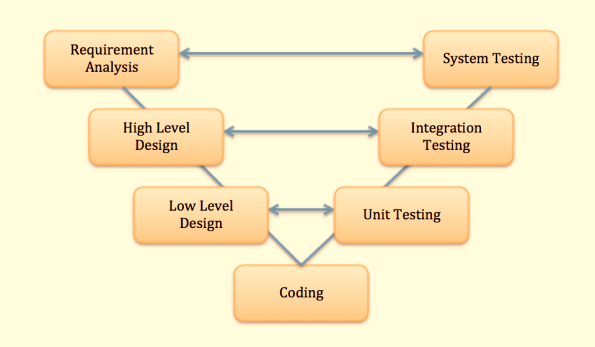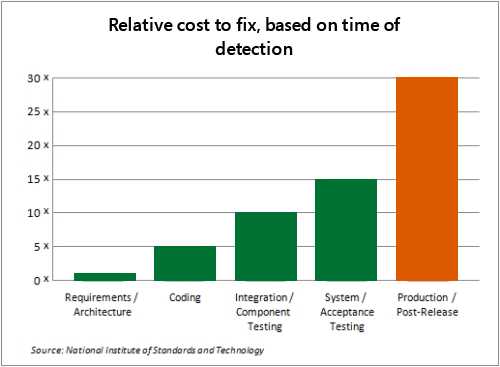What is V-Model in Software Testing?

The V-Model is a highly disciplined SDLC model that includes a testing phase alongside each development phase. The V-model is an extension of the waterfall model that involves sequential software development and testing. It’s referred to as the Validation or Verification Model.
Important Software Engineering Terms
SDLC: SDLC is Software Development Life Cycle. It is the series of activities performed by Developers to design and develop high-quality software.
STLC: STLC is Software Testing Life Cycle. It consists of a series of activities carried out methodically by Testers to test your software product.
Waterfall Model: A waterfall model is a sequential model that divides software development activity into different phases. Each stage is intended to be used for a specific activity. The testing phase in the waterfall model begins only after the system has been implemented.
Example To Understand the V-Model
Suppose, you are assigned a task, to develop a custom software for a client. Now, irrespective of your technical background, try and make an educated guess about the sequence of steps you will follow, to achieve the task.
The correct sequence would be.
| Phases of Software Development | Activities performed in each stage |
| Requirement Gathering stage |
|
| Design Stage |
|
| Build Stage |
|
| Test Stage |
|
| Deployment stage |
|
| Maintenance stage |
|
All these levels constitute the waterfall method of the software development lifecycle.
Problem with the Waterfall Model
As you may observe, that testing in the model starts only after implementation is done.
But if you are working in the large project, where the systems are complex, it’s easy to miss out the key details in the requirements phase itself. In such cases, an entirely wrong product will be delivered to the client and you might have to start afresh with the project OR if you manage to note the requirements correctly but make serious mistakes in design and architecture of your software you will have to redesign the entire software to correct the error.
Assessments of thousands of projects have shown that defects introduced during requirements & design make up close to half of the total number of defects.
Also, the costs of fixing a defect increase across the development lifecycle. The earlier in life cycle a defect is detected, the cheaper it is to fix it. As they say, “A stitch in time saves nine.”
Solution: The V-Model
To address this concern, the V-model of testing was developed where for every phase, in the Development life cycle there is a corresponding Testing phase
- The left side of the model is Software Development Life Cycle – SDLC
- The right side of the model is Software Test Life Cycle – STLC
- The entire figure looks like a V, hence the name V-model
Apart from the V-model, there are iterative development models, where development is carried in phases, with each phase adding a functionality to the software. Each phase comprises its independent set of development and testing activities.
Good examples of Development lifecycles following iterative method are Rapid Application Development, Agile Development
Conclusion
There are numerous development life cycle models. Development model selected for a project depends on the aims and goals of that project.
- Testing is not a stand-alone activity, and it has to adapt the development model chosen for the project.
- In any model, testing should be performed at all levels i.e. right from requirements until maintenance.

